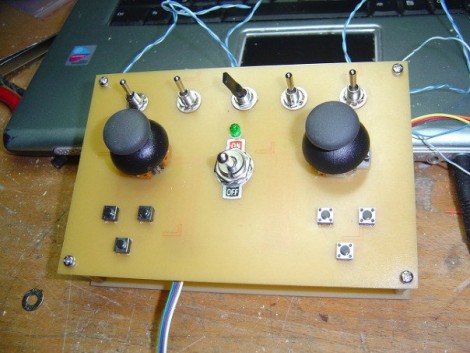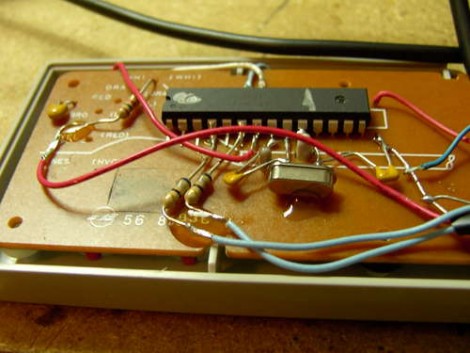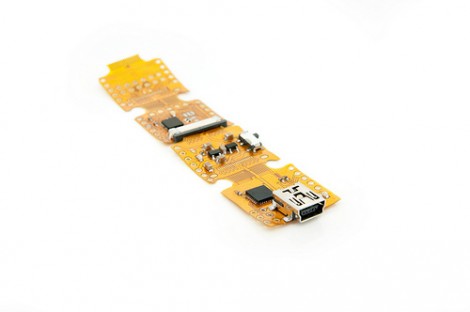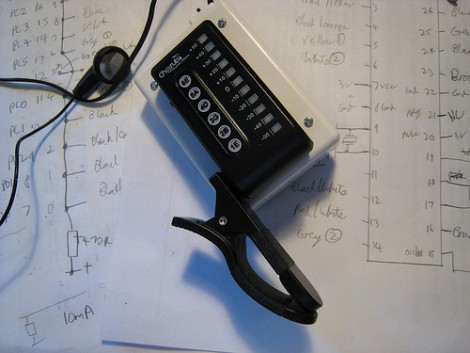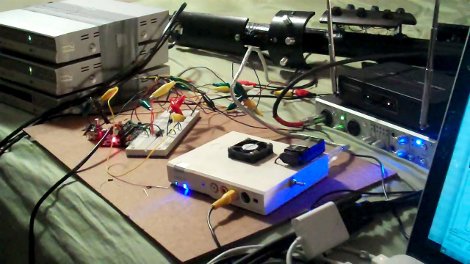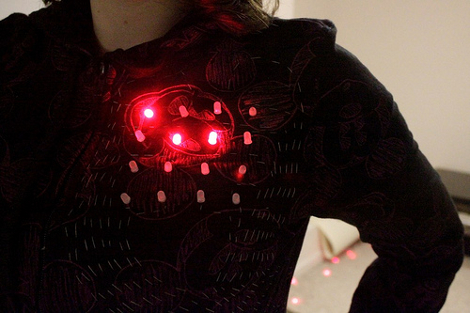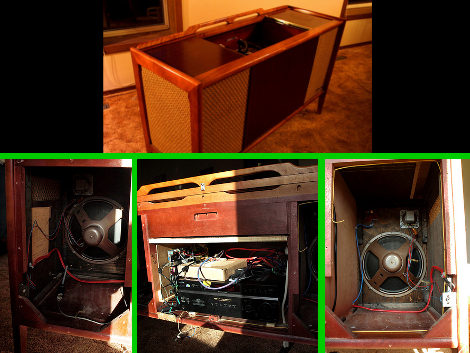
Hard at work on making this 1960’s Fleetwood audio console usable again, [Travis] packed a lot of power into the retro case. Both the radio and turn table had stopped working but the cabinet looks great and the speakers still work. In the lower center cavity you’ll now find a full computer motherboard and replacement amplifier. A new turntable has been added with an interesting vibration-dampening shelf to support it. [Travis] built the shelf with a void in between two layers of wood which he filled with sand to help with isolation. The remote control for the amp also needed some work as the receiver is pointed to the back of the unit. To fix that a second IR receiver found a home behind the fabric for one of the speaker grates. That receiver is monitored by an ATmega168 microcontroller and signals are repeated back to an IR LED mounted near the amplifier.

